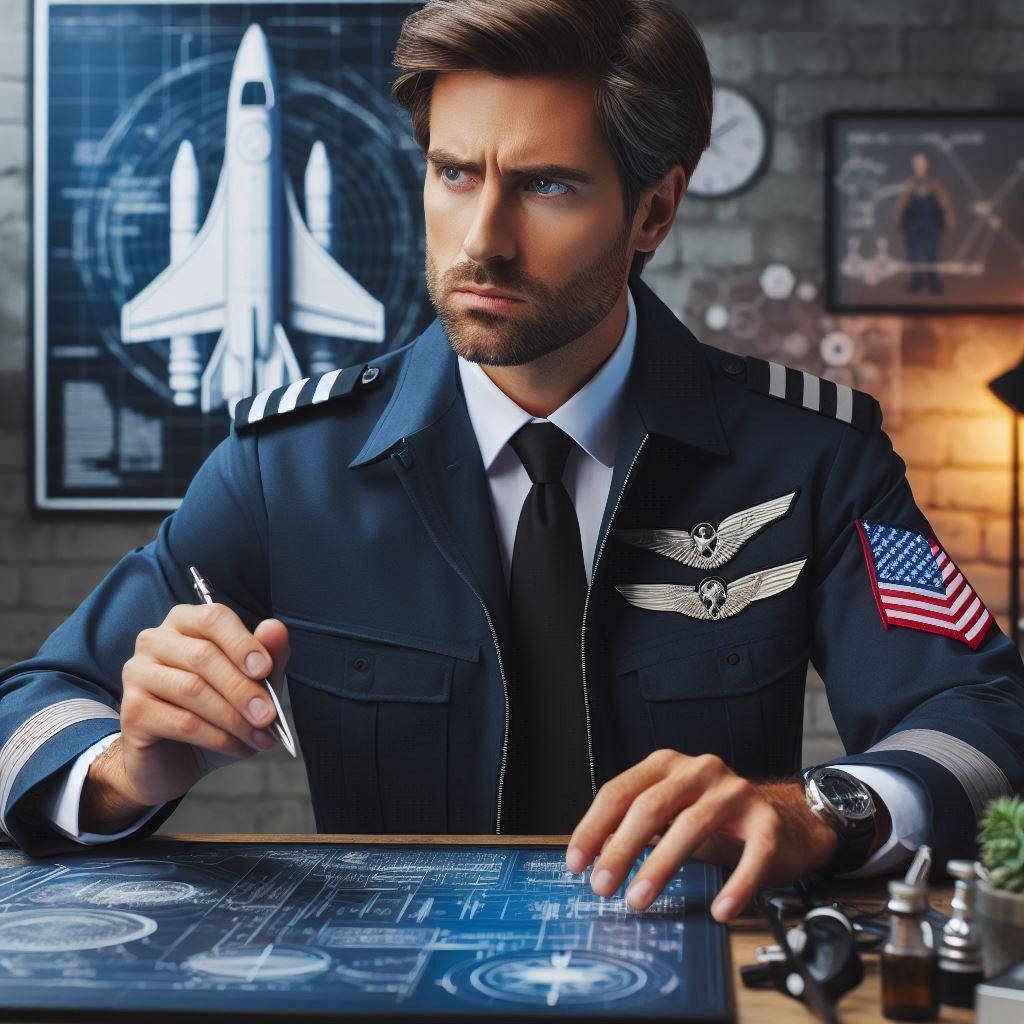Introduction
Aerospace Aeronautical Engineer play crucial roles in aviation.
Aerospace engineers design and develop aircraft, spacecraft, and missiles, covering atmospheric and space flight.
Aeronautical engineers focus specifically on aircraft within Earth’s atmosphere, dealing with aerodynamics, propulsion systems, and aircraft structures.
Understanding the distinction between these roles highlights their unique contributions to aviation.
Aerospace engineers broaden our reach into space, while aeronautical engineers optimize our experience within the atmosphere.
Both fields demand expertise, innovation, and a deep understanding of engineering principles.
Aerospace engineers often work on cutting-edge projects, such as developing reusable launch vehicles and advanced propulsion systems.
Aeronautical engineers, on the other hand, work on improving current aircraft designs.
Developing UAVs (unmanned aerial vehicles), and advancing aviation safety systems.
As technology evolves, the collaboration between aerospace and aeronautical engineers will continue to push the boundaries of what is possible in aviation and space exploration.
Their combined efforts lead to advancements that benefit both military and civilian sectors.
The future of aviation and space travel depends on the ongoing innovation and dedication of these engineers.
They drive progress in areas like hypersonic travel, electric aircraft, and sustainable aviation technologies.
Both aerospace and aeronautical engineers must stay updated with the latest developments in their fields, continuously learning and adapting to new challenges.
Education and Training
Requirements for Becoming an Aerospace Engineer
To become an aerospace engineer, you need a strong foundation in math and science.
A bachelor’s degree in aerospace engineering or a related field is required.
Accredited programs provide essential coursework in aerodynamics, propulsion, and materials science.
Many universities offer hands-on experiences through labs and projects.
Internships or co-op programs are highly beneficial for practical experience.
Advanced positions often require a master‘s degree or Ph.D.
Continuing education and professional development are crucial for staying updated in this dynamic field.
Obtaining certifications from organizations like the American Institute of Aeronautics and Astronautics (AIAA) can enhance career prospects.
Requirements for Becoming an Aeronautical Engineer
Becoming an aeronautical engineer also requires a solid background in math and science.
A bachelor’s degree in aeronautical engineering or a related field is necessary.
Accredited programs cover subjects such as flight mechanics, structural analysis, and avionics.
Practical experience through internships or co-op programs is valuable.
Pursuing a master‘s degree or Ph.D. can open doors to advanced positions.
Continuous learning and professional development are essential for career advancement.
Certifications from relevant professional organizations can improve job opportunities.
Networking with industry professionals through conferences and workshops is beneficial.
Differences in Curriculum and Specialization for Each Profession
The curriculum for aerospace and aeronautical engineering shares many similarities but also key differences.
Aerospace engineering programs cover both atmospheric and space flight.
Students study a wide range of topics, including spacecraft design and orbital mechanics.
The curriculum often includes courses on propulsion systems and space environment.
Specializations may include astronautics, space systems, or satellite engineering.
In contrast, aeronautical engineering focuses exclusively on atmospheric flight.
The curriculum emphasizes aerodynamics, flight mechanics, and aircraft design.
Students learn about structural analysis and avionics specific to aircraft.
Specializations may include rotorcraft, fixed-wing aircraft, or unmanned aerial vehicles (UAVs).
Career Paths and Job Roles
Aerospace engineers have diverse career paths in both atmospheric and space applications.
They can work on designing spacecraft, satellites, and space exploration missions.
Job roles include systems engineer, propulsion engineer, and spacecraft designer.
Aeronautical engineers primarily focus on aircraft and related technologies.
They may work on commercial airplanes, military jets, and helicopters.
Job roles include flight test engineer, avionics engineer, and aerodynamics specialist.
Both professions offer opportunities in research and development, manufacturing, and government agencies.
Engineers in both fields can also pursue academic and teaching careers.
Becoming an aerospace or aeronautical engineer requires a strong foundation in math and science.
While both fields share similarities, they have distinct focuses and specializations.
Aerospace engineers work on both atmospheric and space applications, whereas aeronautical engineers specialize in atmospheric flight.
Each profession offers unique career paths and job roles, contributing to advancements in aviation and space exploration.
Understanding the differences in curriculum and specialization can help aspiring engineers choose the right path for their interests and career goals.
Job Responsibilities
Roles and Responsibilities of Aerospace Engineers
Aerospace engineers design and develop aircraft, spacecraft, and missiles.
They focus on the entire flight process, from takeoff to landing.
Aerospace engineers work on propulsion systems, ensuring efficient and powerful thrust.
They design aerodynamic structures to improve flight stability and performance.
These engineers also develop navigation and control systems for precise maneuvering.
Aerospace engineers conduct tests and simulations to evaluate performance.
They use advanced software to model and analyze flight dynamics.
Safety is paramount; aerospace engineers ensure designs meet rigorous standards.
They collaborate with other engineers to integrate systems and solve complex problems.
Roles and Responsibilities of Aeronautical Engineers
Aeronautical engineers specialize in the design and development of aircraft.
They focus on aircraft that operate within Earth’s atmosphere.
These engineers optimize aerodynamic performance to enhance lift and reduce drag.
They work on propulsion systems, ensuring engines deliver necessary thrust.
Aeronautical engineers design and test aircraft structures for strength and durability.
They develop control systems to ensure stable and responsive flight.
Safety is a key concern; aeronautical engineers ensure aircraft meet stringent regulations.
They conduct wind tunnel tests and simulations to validate designs.
Distinctions in the Focus of Work Between the Two Professions
Aerospace engineers have a broader scope, working on both aircraft and spacecraft.
They address challenges in both atmospheric and space flight.
Aeronautical engineers focus exclusively on atmospheric flight, working with aircraft only.
This distinction shapes their respective areas of expertise and responsibilities.
Aerospace engineers design systems for extreme environments, such as outer space.
They tackle issues like microgravity and thermal regulation.
Aeronautical engineers deal with challenges related to high-speed atmospheric flight.
They optimize aircraft for efficient performance within the Earth’s atmosphere.
Space exploration is a key area for aerospace engineers.
They design satellites for communication, navigation, and Earth observation.
Aeronautical engineers focus on advancing aviation technology.
They innovate in areas like supersonic flight and vertical takeoff and landing.
Aerospace engineers require knowledge of space laws and regulations.
They ensure compliance with international space treaties and standards.
Aeronautical engineers adhere to aviation regulations and standards.
They ensure aircraft designs meet FAA and EASA guidelines.
Aerospace engineers and aeronautical engineers play distinct but complementary roles.
Aerospace engineers work on both aircraft and spacecraft, tackling diverse challenges.
Aeronautical engineers focus exclusively on aircraft, optimizing atmospheric flight.
Aerospace engineers design for extreme environments and space missions.
Aeronautical engineers advance aviation technology for commercial and military applications.
Both professions require specialized knowledge and skills, contributing to the advancement of aerospace and aviation industries.
Understanding these distinctions helps in appreciating the unique contributions of each profession.
Whether designing advanced aircraft or pioneering space exploration, both types of engineers are essential to the progress of aerospace engineering.
Read: Freelance vs. Firm: Career Paths for US Architects
Industry
Industries Where Aerospace Engineers Typically Work
Aerospace engineers work in various industries focused on developing aircraft and spacecraft.
They commonly find employment in aerospace manufacturing companies.
Major players like Boeing, Lockheed Martin, and Northrop Grumman hire aerospace engineers to design and build advanced aircraft and spacecraft.
Another key industry is defense, where aerospace engineers work on military aircraft and systems.
They develop technologies for fighter jets, unmanned aerial vehicles (UAVs), and missile systems.
Their work ensures national security and supports defense operations.
Space exploration is a growing field for aerospace engineers.
Agencies like NASA and private companies such as SpaceX employ engineers to design spacecraft and space missions.
They contribute to advancements in satellite technology, space travel, and planetary exploration.
Aerospace engineers also work in research and development (R&D) sectors.
They focus on innovative technologies and advancements in aviation and space systems.
Research institutions and universities hire aerospace engineers to push the boundaries of aerospace technology.
Industries Where Aeronautical Engineers Typically Work
Aeronautical engineers primarily work in the aviation sector.
They design and develop aircraft, including commercial airliners and general aviation planes.
Companies like Airbus and regional aircraft manufacturers offer career opportunities for aeronautical engineers.
The defense industry also employs aeronautical engineers.
They work on developing and improving military aircraft, such as helicopters and bombers.
Aeronautical engineers contribute to advancements in military aviation and defense technology.
Aeronautical engineers can find positions in airline companies and aviation service providers.
They focus on maintaining, upgrading, and optimizing aircraft performance and safety.
Their work ensures that commercial and private aircraft operate efficiently and reliably.
Another industry for aeronautical engineers is the research sector.
They engage in studies related to aerodynamics, flight dynamics, and aircraft performance.
Research institutions and universities hire aeronautical engineers to conduct experiments and develop new technologies.
Comparison of Career Opportunities in Both Professions
Both aerospace and aeronautical engineers enjoy a range of career opportunities.
Aerospace engineers have a broader scope, working on both aircraft and spacecraft.
Their careers span various industries, including aerospace manufacturing, defense, space exploration, and R&D.
Aeronautical engineers focus specifically on aircraft and aviation-related technologies.
Their careers are concentrated in the aviation and defense sectors, with opportunities in commercial aviation, military aviation, and research.
They may have more specialized roles compared to aerospace engineers.
In terms of career growth, aerospace engineers might find more diverse opportunities due to their involvement in space technology and advanced research.
Aeronautical engineers, however, often have a more targeted career path with deep expertise in aircraft design and aviation technology.
Both professions offer competitive salaries and rewarding career paths.
Aerospace engineers may have opportunities to work on groundbreaking projects in space and defense.
Aeronautical engineers play a critical role in improving aircraft design and performance, impacting the aviation industry.
Aerospace and aeronautical engineers both work in dynamic and impactful industries.
Aerospace engineers have broader career opportunities, working in aerospace manufacturing, defense, space exploration, and R&D.
Aeronautical engineers focus on aircraft and aviation-related technologies, with roles in aviation, defense, and research.
Career opportunities for aerospace engineers span a wide range of fields, while aeronautical engineers often have specialized roles within the aviation sector.
Both professions offer competitive salaries and the chance to contribute to innovative and vital technologies.
The choice between the two depends on individual interests and career goals in aerospace and aviation industries.
Read: Diversity in the US Architectural Scene: A Deep Dive
Salary and Job Outlook
When considering a career in engineering, it is important to take into account the expected salary and job outlook for the specific field.
Aerospace engineering and aeronautical engineering are two closely related but distinct disciplines within the broader field of engineering.
Let’s take a closer look at the salary range and job prospects for professionals in these areas:
Average Salary Range for Aerospace Engineers
Aerospace engineers typically earn competitive salaries due to the technical nature of their work.
The average salary for an aerospace engineer ranges from $80,000 to $120,000 per year.
Entry-level positions generally start around $70,000 annually.
With experience and advanced degrees, salaries can exceed $140,000 per year.
Factors influencing salary include geographic location, employer type, and level of education.
Aerospace engineers working in high-demand regions or for top aerospace companies tend to earn higher salaries.
Specializations in high-demand areas such as propulsion systems or satellite technology can also boost salary prospects.
Average Salary Range for Aeronautical Engineers
Aeronautical engineers also enjoy competitive salaries.
The average salary for an aeronautical engineer ranges from $75,000 to $110,000 per year.
Entry-level positions typically start at around $65,000 annually.
With experience and higher education, salaries can surpass $130,000 per year.
Geographic location, employer type, and specialization significantly affect salary ranges.
Aeronautical engineers working for major aircraft manufacturers or in regions with a high concentration of aerospace industries usually earn higher salaries.
Specializing in areas like avionics or flight testing can enhance salary potential.
Future Job Prospects and Growth Potential in the Field
Aerospace Engineers
The future job prospects for aerospace engineers are promising.
The growing interest in space exploration and satellite technology drives demand for skilled professionals.
Companies like SpaceX and Blue Origin are expanding their operations, creating new job opportunities.
The defense sector also continues to invest in advanced aerospace technologies.
Emerging fields such as urban air mobility and drone technology offer additional career paths.
According to the U.S. Bureau of Labor Statistics, employment for aerospace engineers is projected to grow by 3% over the next decade.
Advancements in space tourism and exploration will further boost job prospects.
Aeronautical Engineers
Aeronautical engineers also have strong job prospects due to ongoing developments in aviation.
The commercial aviation industry is expanding, with new aircraft designs and technologies.
The rise of unmanned aerial vehicles (UAVs) opens up new opportunities for aeronautical engineers.
The military sector continues to invest in advanced aircraft and aviation systems.
According to the U.S. Bureau of Labor Statistics, employment for aerospace engineers, which includes aeronautical engineers, is expected to grow steadily.
The need for innovative and efficient aircraft designs will sustain demand for aeronautical engineers.
Sustainable aviation and green technologies will also create new job opportunities.
Aerospace and aeronautical engineers enjoy competitive salaries and promising job prospects.
Aerospace engineers typically earn between $80,000 and $120,000 per year, while aeronautical engineers earn between $75,000 and $110,000.
Future job growth in both fields is driven by advancements in space exploration, satellite technology, and aviation.
Emerging technologies and the expansion of commercial space and aviation sectors offer exciting opportunities.
Both professions offer rewarding careers with the potential for significant growth and innovation.
Understanding salary ranges and future prospects can help aspiring engineers make informed career choices.
Transform Your Career Today
Unlock a personalized career strategy that drives real results. Get tailored advice and a roadmap designed just for you.
Start NowRead: How to Become a Civil Rights Advocate

Skills and Qualities
Key Skills Required for Success as an Aerospace Engineer
Aerospace engineers need strong problem-solving skills to tackle complex design challenges.
They must have a deep understanding of aerodynamics and propulsion systems.
Mathematics and physics are essential skills for analyzing data and developing solutions.
Attention to detail is crucial in aerospace engineering to ensure safety and accuracy.
Strong computer skills are necessary for modeling and simulating aircraft designs.
Communication skills are important for collaborating with team members and presenting ideas.
Aerospace engineers must be innovative and creative in designing cutting-edge technology.
Project management skills are vital for overseeing the development and testing of aircraft.
Key Skills Required for Success as an Aeronautical Engineer
Aeronautical engineers need a strong foundation in aerodynamics and aircraft structures.
Problem-solving skills are essential for identifying and resolving issues in aircraft design.
Mathematical skills are necessary for analyzing data and optimizing aircraft performance.
Attention to detail is crucial in aeronautical engineering to ensure safety and reliability.
Computer skills are important for using software tools to design and test aircraft.
Communication skills are vital for working with team members and presenting findings.
Aeronautical engineers must be innovative in developing new aircraft technologies.
Project management skills are necessary for overseeing the design and production of aircraft.
Comparison of the Skills Needed for Each Profession
Both aerospace and aeronautical engineers require a strong foundation in aerodynamics.
Problem-solving skills are essential for addressing design challenges in both fields.
Mathematical skills are crucial for analyzing data and optimizing aircraft performance.
Transform Your Career Today
Unlock a personalized career strategy that drives real results. Get tailored advice and a roadmap designed just for you.
Start NowAttention to detail is required in both aerospace and aeronautical engineering for safety.
Computer skills are important for modeling and simulating aircraft designs in both professions.
Communication skills are vital for collaborating with team members and presenting ideas.
Innovation and creativity are necessary for developing cutting-edge aircraft technology.
Project management skills are essential for overseeing the design and testing of aircraft.
Read: The Intersection: Architecture & Tech in Modern USA.
Advancements and Innovations
In the rapidly evolving world of engineering, both aerospace and aeronautical engineering have seen significant advancements and innovations in recent years.
Let’s take a closer look at some of these developments.
Recent Advancements and Innovations in Aerospace Engineering
Aerospace engineering has seen significant advancements in recent years.
One major innovation is the development of reusable rockets.
Companies like SpaceX have revolutionized space travel with rockets that can land and be reused.
This innovation reduces costs and makes space exploration more sustainable.
Another advancement is in satellite technology.
Engineers have created smaller, more efficient satellites for communication, weather forecasting, and Earth observation.
These satellites enhance global connectivity and provide crucial data for various industries.
The integration of artificial intelligence (AI) and machine learning in aerospace systems marks another significant innovation.
AI improves the efficiency of space missions, assists in autonomous navigation, and enhances data analysis.
These technologies make space exploration safer and more effective.
Electric propulsion systems for spacecraft represent a breakthrough in the field.
They offer a more efficient and environmentally friendly way to power spacecraft.
This technology extends mission durations and reduces reliance on chemical propellants.
Recent Advancements and Innovations in Aeronautical Engineering
Aeronautical engineering has also experienced remarkable advancements.
One key innovation is the development of more fuel-efficient aircraft.
Engineers have designed new airframes and engines that reduce fuel consumption and emissions.
These improvements make air travel more sustainable.
Advancements in composite materials have revolutionized aircraft manufacturing.
Lightweight and durable materials like carbon fiber enhance aircraft performance and fuel efficiency.
These materials also improve the safety and longevity of aircraft.
The rise of unmanned aerial vehicles (UAVs) or drones represents another significant innovation.
Drones are used for various applications, including surveillance, delivery, and agricultural monitoring.
Aeronautical engineers are at the forefront of developing and improving these versatile aircraft.
The implementation of advanced avionics systems has transformed aircraft navigation and control.
Modern avionics enhance flight safety, improve efficiency, and provide pilots with better situational awareness.
These systems are crucial for both commercial and military aviation.
Impact of Technology on the Evolution of Both Professions
Technology has profoundly impacted both aerospace and aeronautical engineering.
In aerospace engineering, innovations like reusable rockets and electric propulsion have transformed space exploration.
Engineers now focus on making space travel more cost-effective and sustainable.
The use of AI and machine learning in aerospace engineering has enhanced the efficiency and safety of space missions.
These technologies enable more accurate data analysis, autonomous operations, and advanced mission planning.
They have opened new possibilities for exploration and research.
In aeronautical engineering, technological advancements have led to the development of more efficient and sustainable aircraft.
Innovations in materials, avionics, and UAVs have reshaped the aviation industry.
Engineers now prioritize reducing environmental impact and improving aircraft performance.
Both professions benefit from advancements in computational tools and simulation software.
These technologies allow engineers to design, test, and optimize complex systems more effectively.
Virtual simulations reduce the need for physical prototypes and accelerate the development process.
Aerospace and aeronautical engineering have both experienced significant advancements and innovations.
Aerospace engineering has seen breakthroughs in reusable rockets, satellite technology, AI, and electric propulsion.
These innovations make space exploration more sustainable and efficient.
Aeronautical engineering advancements include fuel-efficient aircraft, composite materials, UAVs, and advanced avionics.
These developments improve aircraft performance, reduce environmental impact, and enhance flight safety.
Technology continues to shape the evolution of both professions.
Innovations in computational tools, simulation software, and AI drive progress in aerospace and aeronautical engineering.
These advancements ensure that engineers can tackle complex challenges and contribute to the future of aviation and space exploration.
Learn More: Freelance vs. Full-Time Network Engineer: Pros and Cons
Discover More: Aerospace Engineering Professional Organizations
Conclusion
Aerospace engineers and aeronautical engineers each play distinct yet complementary roles in advancing aviation and space exploration.
Aerospace engineers work on designing and developing aircraft, spacecraft, and missiles, focusing on both atmospheric and space flight.
Aeronautical engineers specialize in aircraft operating within Earth’s atmosphere, dealing with aerodynamics, propulsion, and structures.
Both professions are essential for technological advancements in aviation and space industries.
Aerospace engineers contribute significantly to space exploration, satellite communications, and military defense, pushing the boundaries of human reach into space.
Aeronautical engineers enhance the safety, efficiency, and performance of commercial and military aircraft.
Improving our experience and capabilities within the atmosphere.
For individuals considering a career in either profession, it’s crucial to understand the specific focus and impact of each role.
Aerospace engineering offers opportunities to work on space missions and cutting-edge technology.
While aeronautical engineering focuses on optimizing aircraft design and performance.
Both fields demand a strong foundation in engineering principles, continuous learning, and innovation.
Aspiring engineers should evaluate their interests in space and aviation to determine the best path for their careers.
[E-Books for Sale]
The Big Book of 500 High-Paying Jobs in America: Unlock Your Earning Potential
$19.99 • 500 High-Paying Jobs • 330 pages
Explore 500 high-paying jobs in America and learn how to boost your career, earn more, and achieve success!
See All 500 High-Paying Jobs of this E-Book
1001 Professions Without a Degree: High-Paying American Jobs You Can Start Now
$19.99 • 1001 Professions Without a Degree • 174 pages
Discover 1001 high-paying jobs without a degree! Unlock career tips, skills, and success strategies for just $19.99!




